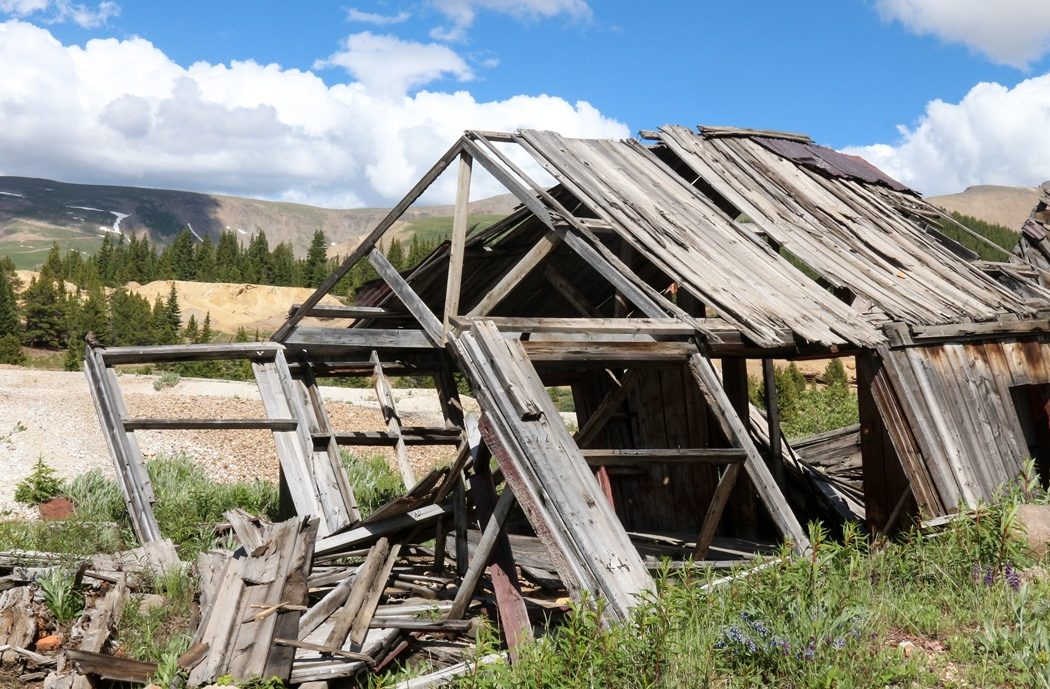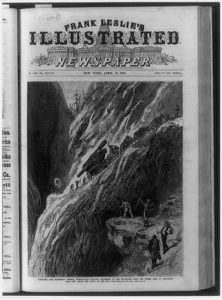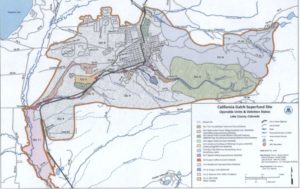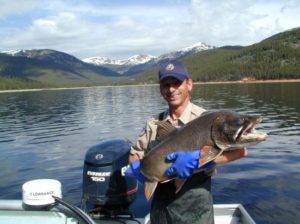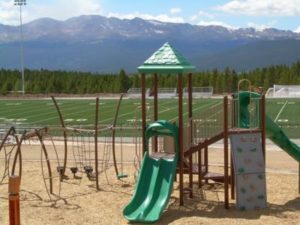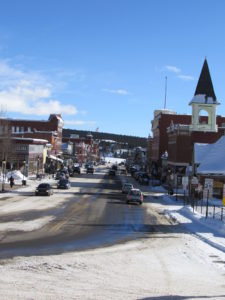Nestled high in the Rocky Mountains, at an elevation of 10,000 feet, sits the historic mining town of Leadville, Colorado. This charming Victorian-era town is one of the original mining towns in the state, and has been revived as a popular destination for outdoor enthusiasts.
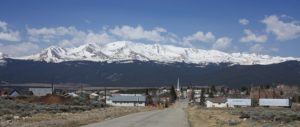
Photo of Leadville via Colorado Rafting.
The town is also a popular destination for runners wishing to acclimate to the elevation while enjoying the scenic beauty and ample outdoor opportunities. It wasn’t always this way. In the 1980s, Lake County and the city of Leadville faced the shutdown of their largest employer.
A period of high unemployment ensued, but so did the cleanup of mining, milling and smelting wastes spanning more than 18 square miles. As in so many other distressed places around the world, this restorative activity gave birth to a healthy local Restoration Economy. The economy was initially boosted by the job-producing restoration activities themselves, but is not sustained by the resulting improvement in ecosystem services.
Today, Lake County has bounced back, with a vibrant, increasingly diversified economy focused on the area’s rich heritage and remarkable natural resources. Outdoor recreation and tourism are attracting visitors from across the country.
Collaboration among EPA, other federal agencies, the Colorado Department of Public Health and the Environment (CDPHE), and potentially responsible parties (PRPs) made possible a cleanup that has protected human health and the environment. Because the cleanup plan was compatible with the community’s goal to diversify the economy, tourism and recreational amenities have expanded.
The U.S. EPA’s Brownfield and Superfund programs–along with the Federal Historic Preservation Tax Incentives program–have traditionally been the federal programs with the highest ROI (return on investment). As a result, the have long enjoyed bipartisan support. Not surprisingly, given the global rise of restorative development, all three are based on repurposing, renewing, and reconnecting our natural, built, and socioeconomic assets (the 3Re Strategy).
But the current administration in Washington, DC—which seems to be allergic to facts of any kind—has been attacking all three of these programs. The theory seems to be that—if it’s good for the environment and good for the public welfare—it’s got to be a waste of money. This story puts the lie to that perspective.
The California Gulch Superfund Site consists of approximately 18 square miles in Lake County>. The area includes the city of Leadville, parts of the Leadville Historic Mining District, and a section of the Arkansas River from the confluence of California Gulch downstream to the confluence of Two-Bit Gulch.
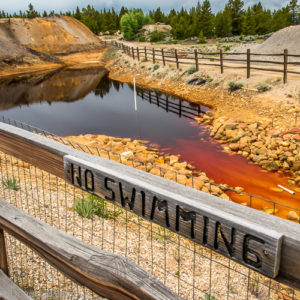
This “no swimming” sign was probably unnecessary! Photo via Travels with Buck.
It’s a great environmental remediation and restoration success story. Just ask any of the thousands of trout fishers who enjoy the beauty and life of what used to be ugly, dead streams.
Mining in the Leadville area began in 1859, when prospectors working in the channels of the Arkansas River tributaries discovered gold at the mouth of California Gulch. In April 1860, one of the richest discoveries of placer gold in Colorado was discovered at California Gulch. By 1872, placer mining in California Gulch yielded more than $2,500,000, roughly equivalent to $47,674,478 today.
In 1876, piles of sand once considered bothersome to placer gold miners, were discovered to contain lead carbonates and were traced back to California Gulch. This discovery propelled a rush of miners to the area. The town of Leadville was founded a year later by mine owners Horace Austin Warner Tabor and August Meyer.
Mining, mineral processing, and smelting in and near Leadville produced gold, silver, lead, copper, manganese, and zinc for more than 130 years. Wastes generated during the mining and ore processing contained metals, such as cadmium, copper, lead, and zinc.
These wastes remained on the land surface and migrated through the environment by washing into streams and leaching contaminants into surface water and groundwater. Investigation of the site began in the mid-1980s. California Gulch was designated a Superfund Site in 1983, shortly after the U.S. Environmental Protection Agency created the program.In 1998, EPA and the state of Colorado signed agreements to provide public access to open space near the Arkansas River. State and local governments purchased over 2300 acres of ranch land to serve as wildlife habitat and recreational resources.
In 2014, the Colorado Parks and Wildlife Commission honored the site with a Gold Medal Trout Waters designation.
The designation highlights the Upper Arkansas River’s improved water quality and revitalized habitats for trout and other wildlife.
These fishing areas are noted by Colorado Wildlife Commission as places where trout are plentiful and larger. The designation has been 20 years in the making, and although anglers have enjoyed the restored conditions for years, the award is an official acknowledgement of the myriad efforts by state and federal agencies, local governments and stakeholders to turn an impaired river into one of the most popular fishing destinations in Colorado.
Gold medal waters are not the only great environmental happenings in Leadville. The Cloud City Conservation Center (C4) was awarded two EPA grants for environmental justice work and environmental education work.
Over the years, EPA worked with the State, the community and the site’s potentially responsible parties to coordinate redevelopment and ecological restoration work. Some redevelopment activities include an urban development project at an old railyard, a community sports complex, a nationally-recognized multi-use paved trail called the Mineral Belt Trail, and recreational trails along the Arkansas River.
Currently, a 250-home mixed-use development is underway at the Old Railyard site, also known as Poverty Flats. This development includes commercial and retail space, single-family homes, townhomes and condominiums. Another example of redevelopment is a $1.5 million public sports complex. The complex includes a soccer field built in 2009 on a former zinc smelter.
One of EPA’s national partners, the United States Soccer Foundation, awarded a $10,000 grant to develop initial plans for the facility. Community support also led to the creation of a 21,000-square-foot concrete skate park that opened in the fall of 2013. Additionally, a community-driven initiative called the Huck Finn Park Project upgraded an existing Leadville park into a skate board park along with new ice skating facilities, which include a warming hut, restrooms, concessions and park equipment storage.
Moreover, the community also incorporated reuse of mining byproducts into the design of the Mineral Belt Trail, which opened in 2000. This nationally-recognized recreation trail is built around the city along a railroad grade, which weaves through the historic mining district highlighting the community’s history and heritage.
Recreational reuse at the site also includes the Arkansas River Trail, a 5-mile loop along the Upper Arkansas River. In 1998, EPA and the State signed agreements to provide public access to open space near the Arkansas River.
California Gulch is just one of the many Superfund sites in Colorado. The Superfund program is responsible for cleaning up contaminated land and responding to environmental emergencies, oil spills and natural disasters in the United States. Let’s hope sanity prevails in Washington, DC, and this program is strengthened, expanded, and improved.
Featured photo of old mining shack near Leadville via Adobe Stock.
See EPA Case Study on the California Gulch Superfund Site success (PDF).

